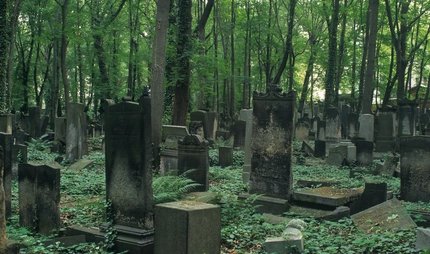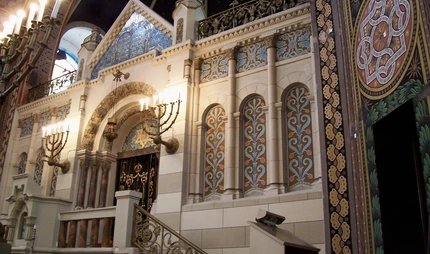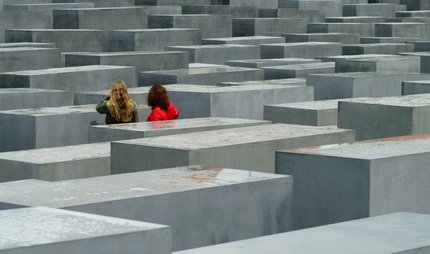
Alter Jüdischer Friedhof (Old Jewish Cemetery)
Where Moses Mendelssohn was buried
Once a Jewish cemetery, then destroyed by the Nazis, the Alter Jüdischer Friedhof in Berlin has been restored again.
The site in Hamburger Straße was once the resting place of many famous members of Berlin’s Jewish community. It is now the oldest recognisable cemetery in the inner city.
The beginnings
After large numbers of Jews were expelled from Vienna, Elector Friedrich Wilhelm issued an edict to take them in. In 1671, after an absence of more than a century, a Jewish community was re-established in Berlin, with more than 50 families moving in. The community was granted a burial place near Oranienburger Straße in the Rosenthal quarter which, at the time, was outside the city walls. Thousand of Jews are said to have been buried between 1672 and 1827 on the site covering only 5,900 square metres.
The most famous grave is probably that of the German philosopher Moses Mendelssohn, who was buried here in 1786. A gravestone, which has had to be restored several times, recalls the famous Enlightenment figure. To this day, Mendelssohn is considered the pioneer of the Haskalah, or Jewish Enlightenment. In 1763, his philosophical writings won the first prize of the Royal Academy in Berlin. Known to his followers as the German Socrates, Mendelssohn was a close friend of Gotthold Ephraim Lessing and is believed to be the inspiration for Nathan the Wise.
Other famous figures buried at the old Jewish cemetery include David Hirschel Fraenkel, Mendelsohn’s famous rabbi and teacher, Veitel Heine Ephraim, the court Jew of Frederick the Great who built the magnificent Ephraim Palace, Marcus Herz, the director of the Jewish hospital, and Jacob Herz Beer, the father of the composer and director Giacomo Meyerbeer.
After the closure
The cemetery was closed because of the Prussian hygiene ordinance of 1794, which prohibited burials at cemeteries in residential areas within the city walls. In 1827, a new Jewish cemetery was opened on Schönhauser Allee, but this was already too small by 1880, and so the Jewish cemetery in Weißensee was opened.
When the Jewish old people’s home was built and opened in 1844, the entrance of the former cemetery was moved to Hamburger Straße. Because Jewish religious law forbids the disturbance of the dead, the old cemetery was not built on, and it became a park used by the 120 residents of the old people’s home. It was an also a place where pupils of the nearby Jewish boys’ school could learn about natural history.
The Nazi period
Under the Nazis, the old people’s home was used from 1942 by the Gestapo as a holding camp for around 55,000 Jewish inhabitants of Berlin, and it was destroyed along with the cemetery in 1943. A zigzag trench was dug through the graveyard, the bones of the dead were pulled out of the ground and the gravestones were smashed. In April 1945, 2427 soldiers and civilians killed in street fighting were buried in mass graves at the cemetery.
After the war
In 1948 the cemetery was returned to the Jewish community. Part of the site was converted to a public park in the 1970s. On the site of the destroyed old people’s home, Willi Lammert’s sculpture “Jewish Victims of Fascism” was placed next to a memorial stone.
From 2007 to 2008, the site was altered again and tidied up so that the cemetery area could be seen again. A basin for ritual hand washing was put up by the entrance and panels provide information on the cemetery and the old people’s home.
More information for your visit
You can combine your visit to the former cemetery with other sites of Jewish history in Berlin. Not far from the cemetery are the Anne Frank Zentrum and the Museum Blindenwerkstatt Otto Weidt, where every Sunday there are free guided tours of the original rooms where the broom maker Weidt hid his blind and deaf Jewish employees from the Nazis.
There is a digital guide to help you discover the historic Jewish cemeteries: use a QR code for information in German or English on the history of the cemeteries and the notable people buried there.
daily unlimited



